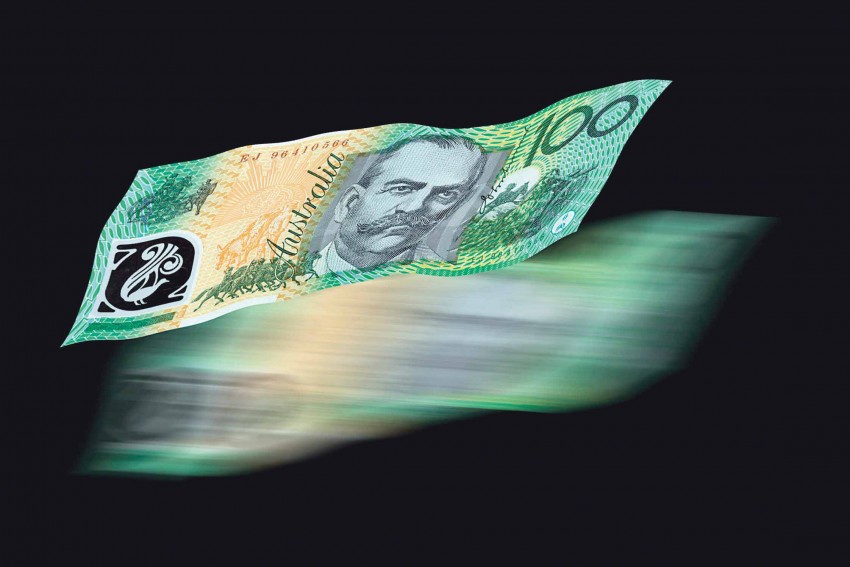Why a fixed exchange rate would not work

Australia is again witnessing the virtue of having a freely floating exchange rate, as the market works to lower the value of the Australian dollar from the heady days in 2011 when it traded above 110 US cents. In recent weeks, the Australian dollar has traded in a range around 75 to 78 US cents, as commodity prices plummet and the domestic economy muddles along with low interest rates and what seems to be persistently weak growth. It is important to realise why the Australian dollar has fallen so far and how the floating exchange rate operates as an effective and very efficient safety valve for the economy. When the Australian economy is strong, boosted by a strong export performance for example, an old-fashioned fixed exchange rate would see a flood of money flow into the economy, which would boost economic growth to an unsustainably strong rate. This would translate to an inflation jump, and the central bank would need to lift interest rates to try and cool off the impact of what would soon be an unsustainable boom. But this would not work because the high interest rates, under a fixed exchange rate, would attract more foreign hot money into the economy and neutralise the impact of those higher interest rates. Any wealth benefit from the good economic conditions would be lost in the market disruption, as the domestic economy would need to be suppressed by tight monetary policy. The fixed exchange rate simply does not work. If there was a floating exchange rate and the Australian economy was strong, being boosted by a strong export performance, there would be an appreciation in the Australian dollar, which would lessen the export returns for the whole economy. This is as it should be, but there would be a strong off setting benefit to the rest of the economy through lower prices for imports as the dollar rose. These lower prices for imports would help to support the economy as consumers were able to ramp up their consumption with greater purchasing power and the business sector would face lower costs for capital equipment, which, in Australia’s case, is predominantly imported. Amid this, there would be no appreciable upside impact on inflation with the boost to the economy from the strong export sector more or less offset by lower prices from imported items. The central bank could leave interest rates little changed in this example with the export boost to the economy and inflation dampened by the exchange rate ‘floating’ higher. In other words, the inflationary effect from a positive shock to the economy from an export surge, for example, is neutralised to a large extent with a floating exchange rate, which allows the benefits of the positive economic shock to be accrued without a burst in inflation. Which brings us to the current situation where the Australian dollar has, like clockwork, depreciated as Australia’s export earnings have been undermined by falling commodity prices and slower growth in our major trading partners. The lower dollar is helping to cushion what might otherwise be a recession risk from the fall in commodity prices as it boosts the competitiveness of local firms and industries that are exporters or who compete with what used to be cheaper imports when the dollar was higher. Even though the fall in the Australian dollar has gathered pace in recent months and needs to stay low for the full effects to work their way fully through the economy, there are already signs of a lift in tourism and education exports, both high value added sectors of the economy. There is also a broader optimism in other non-mining companies, in manufacturing and online retailing, where some market opportunities have arisen as low-cost importers and other low exchange rate countries are now out-competed by those Australian firms simply because, a couple of years ago, the Australian dollar was too high. With a floating exchange rate, the Australian dollar tends to fall when export prices drop, interest rate differentials narrow, the trade account deteriorates or, occasionally, when there is additional risk from, say, a credit rating downgrade. Of course, it tends to rise when the opposite circumstances are in play. When one looks at the last 24 years of the Australian economy, a period that quite extraordinarily has not seen a recession, the floating exchange rate has been a critical element helping this incredible performance. Get set for more volatility for the Australian dollar but, with that, we are likely to see a more stable performance for the economy. Stephen Koukoulas is the Managing Director of Market Economics thekouk.com.au @TheKouk